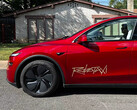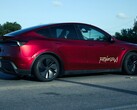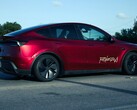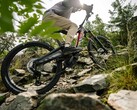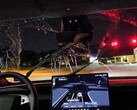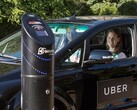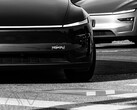Tesla launched its official Robotaxi service with the first rides in a driverless Model Y fleet currently cruising the city of Austin. It has also created a dedicated Robotaxi X account as well as a signup website for when the platform arrives to other cities.
The Tesla Robotaxi would be priced cheaper than Uber or Waymo, its main competitors in the area, and the rides are scheduled via a dedicated Robotaxi app that seems to be iOS-exclusive for now.
Tesla robotaxi ride prices
- $4.20 flat fee per ride
During the Cybercab two-seater unveiling, Elon Musk estimated that its operating costs can be as low as $0.20 per mile, with ride prices starting from just $0.30/mile when the service is scaled up.
While this is significantly cheaper than Uber, Lyft, or Waymo, the estimate is for Cybercab rides and "at scale." Tesla is far from scaling up its Robotaxi platform, though, as it just started small with a dozen or so driverless Model Y vehicles in Austin.
In the inaugural Early Access period that starts June 22, the Robotaxi rides are invite-only, and the app can't be downloaded by the public that would like to give the driverless Model Y a spin.
For the duration, Tesla will charge just $4.20 per ride in the geofenced area, regardless of the distance covered, which is obviously a tongue-in-cheek price knowing how Elon Musk toys around with the 420 number. Tesla also pranks the invite-only crowd with a ride review and tip screen that says "just kidding" while trying to actually leave a tip to the driverless car.
Austin Robotaxi launch
The city of Austin has welcomed the launch of no less than six autonomous vehicle services so far, and Tesla's Robotaxi platform is just the latest in that installment. Tesla chose Texas because it didn't have any special permit system for self-driving cars, as long as they are registered and insured.
A group of local lawmakers have now proposed such a licensing procedure where manufacturers have to check a few compliance boxes such as communication with law enforcement and first responders in the case of an accident. The Robotaxi launch went ahead in Austin, as Tesla was told it can cover any requirements included in the bill it doesn't already comply with on the fly before its September 1 mandate.
Tesla already did trainings with Austin first responders how to react to Robotaxi situations, and the city's transportation department already held a presentation saying the service is welcome. They cited a very low share of actual collisions (under 7%) among all 119 situations involving autonomous vehicle services in the city in the past two years. Most of those were with disoriented Cruise vehicles, too, so Austin is glad that GM put the kibosh on that undertaking.
The pilot Robotaxi launch in Austin is orchestrated very carefully with a group of select automotive influencers as passengers, a safety monitor from Tesla at the front seat, and in a geofenced area that Tesla has been extensively mapping prior to the launch.
Source(s)
Robotaxi, Sawyer Merritt (X)





